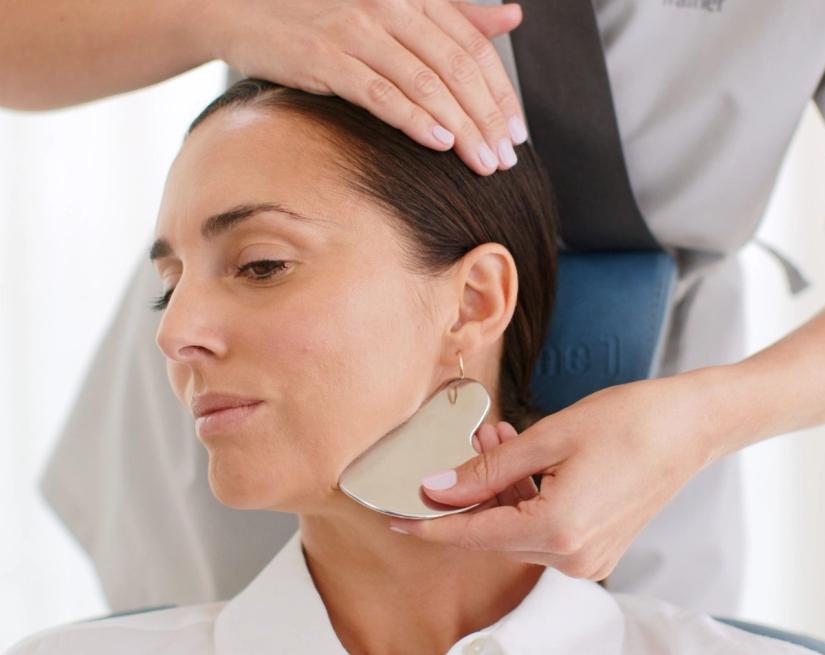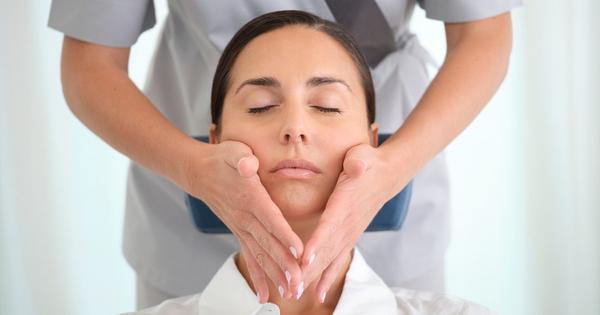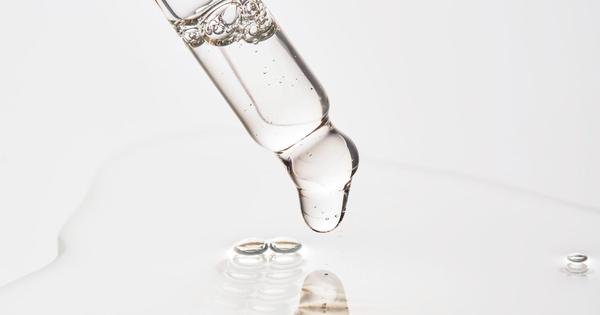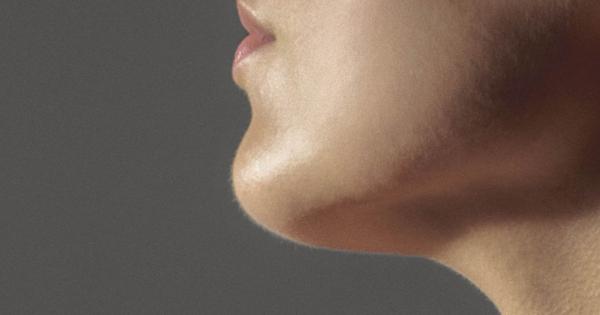Merchandising Gua Sha
Lifting black jade gua sha
skin care
Maria Giulia Simonazzi | International Training Manager
10 min read

Rooted in traditional Chinese medicine for centuries, Gua Sha—pronounced “gwah-sha”—has become a staple in modern skincare rituals worldwide. This facial technique typically uses a flat, often heart-shaped stone crafted from jade or rose quartz, renowned for its skin-firming and brightening effects on all skin types.
Contrary to its name, Gua Sha involves no scraping. Instead, it employs a gentle gliding motion with slight pressure, promoting enhanced circulation, increased blood flow, and relaxation of facial muscles. Gua Sha offers a holistic approach to skincare by seamlessly blending facial massage and self-care into a singular practice. Read on to learn more about the Gua Sha tool and the step-by-step technique to unlock its optimal beauty benefits.
Gua Sha tools come in a diverse array of shapes and materials, each offering unique advantages. The underlying concept is that each stone carries its own energy, imparting distinct healing benefits. Traditional Gua Sha tools often feature heart or moon shapes and are crafted from a variety of materials. One of the frequently used materials is rose quartz, known for promoting love and harmony. Jade is another common choice, valued for its cooling properties—this can also be found in the form of a jade roller. Additional variations may incorporate crystals or Bian Shi, a micro-crystalline stone filled with over 30 minerals beneficial to the human body.
Before selecting a Gua Sha stone, it's essential to consider the type of crystal, stone, or other material that aligns with your energy and skincare goals. The shape of the tool also plays a crucial role. Opt for a Gua Sha with diverse contours, allowing you to use the tool effectively on various parts of your face or body.

The foundation for a successful Gua Sha session lies in the preparation done beforehand, prioritizing the effectiveness of the technique as well as your comfort and safety throughout the experience. The first step is to cleanse your skin thoroughly with a gentle cleanser. Remove any makeup, dirt, or impurities to create a clean canvas for the Gua Sha tool.
After cleansing, consider applying a toner to restore the skin’s pH levels, promoting better absorption of the Gua Sha oil or serum that will be applied during the session. When it comes to using the tool, lubrication is essential. Just a few drops of a nourishing facial oil or serum will not only enhance the curved side of the facial tool’s glide but also contribute to a rejuvenating, therapeutic experience.
Gua Sha is a facial treatment that invites you to connect with your body, improve circulation, and promote holistic well-being. With the proper techniques, it can be quite simple to perform at home.
Before beginning your Gua Sha session, gather all the materials you will need. This typically includes your Gua Sha tool, a clean cloth, facial oil, and soothing face cream.
Begin with a gentle cleanser on your skin to remove any makeup, dirt, or impurities. This step prepares your skin for the Gua Sha treatment.
High-quality facial oils or moisturizers act as lubricants, ensuring smooth gliding of the tool across the skin, and avoiding any potential discomfort. A clean cloth or tissue is handy for wiping the tool between strokes and maintaining hygiene.

You should select the Gua Sha tool that suits your preferences and needs. Common material options include jade or rose quartz with rounded edges to ensure a gentle scraping motion. The skincare tool should be easy to grip and have various contours to fit the different angles of your face.
Hold the Gua Sha tool at a 45-degree angle to your skin and gently pull in upward and outward motions. Start from the neck and move upward to the forehead. Repeat each movement three to five times before moving on to the next area. As you use the tool, imagine releasing tension and revitalizing your skin with each stroke.
To stimulate circulation and lymphatic drainage, focus on specific areas with tension or increased puffiness, such as the jawline, cheekbones, collarbones, and forehead. To ensure a relaxing experience, adjust the pressure based on your comfort level and consider doing slow strokes.
Some areas, especially those that are tight or tense, may need extra attention. Repeat the scraping motion as necessary.
After a Gua Sha session, clean the beauty tool with a mild soap and warm water. Dry it thoroughly before storing it. An uncleaned tool may cause acne, increased oil production, or breakouts.
Whether you practice Gua Sha in the morning or night, your regular skincare and beauty routine—including a cleanser, serums, and moisturizer—should still be completed after a session to maximize the benefits.
To enjoy the best results of Gua Sha, incorporate it once or twice a day for five minutes. Consistent practice may lead to a brightened complexion and reduce puffiness.
When done correctly and consistently, Gua Sha has impressive benefits, including both physical and mental. The smooth edges of the Gua Sha tool glide across the skin to help improve blood circulation, reduce inflammation, and sculpt facial muscles. With regular practice, it may also stimulate the flow of energy.
However, if done improperly, Gua Sha may be uncomfortable and you may experience mild bruising, redness, or sensitivity. Especially if the technique is applied aggressively on sensitive skin. It is essential to start with light pressure and gradually increase to firm pressure intensity based on personal comfort levels.
If you have certain medical conditions, such as skin disorders or blood clotting issues, you should consult with a healthcare professional or skincare expert before incorporating Gua Sha into your routine. Listening to your body’s cues is key; if you experience discomfort or notice adverse reactions, adjust your approach accordingly.
You can perform a Gua Sha facial massage as often as daily or a few times a week, depending on your skin’s tolerance and your skincare goals. However, you should have a systematic approach to your Gua Sha skincare routine. Start from the neck and move upwards to the forehead, applying gentle pressure (and then medium pressure and then possibly firm pressure) as you pull the tool across the skin. Use various techniques, focusing on key areas such as the neck, throat, jaw, cheeks, eyes, and forehead. Following an order will help ensure you cover all areas evenly.
Gua Sha is also excellent for promoting lymphatic drainage and reducing a build-up of fluid retention. Pay special attention to areas where lymph nodes are concentrated, such as the jawline and under the ears, to help reduce puffiness. Gua Sha should be a mindful and enjoyable practice, so avoid rushing through your routine.
Though this ancient Chinese healing technique can be practiced as often as you like, be sure to always listen to your body and adjust the frequency when needed. To enhance your next Gua Sha session, consider adding a nourishing facial oil for a smoother surface and silkier skin.

Lifting black jade gua sha
Lightweight elasticizing blend
Ultra gentle cleanser
Nourishing vitamin oil
Soothing hydrating cream